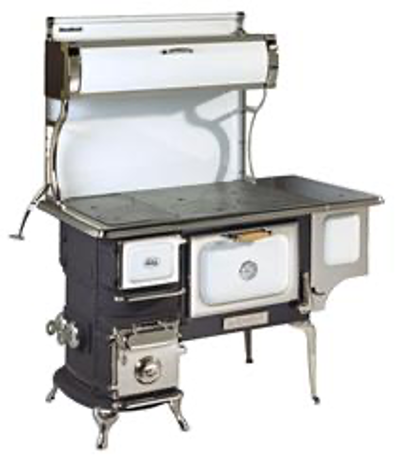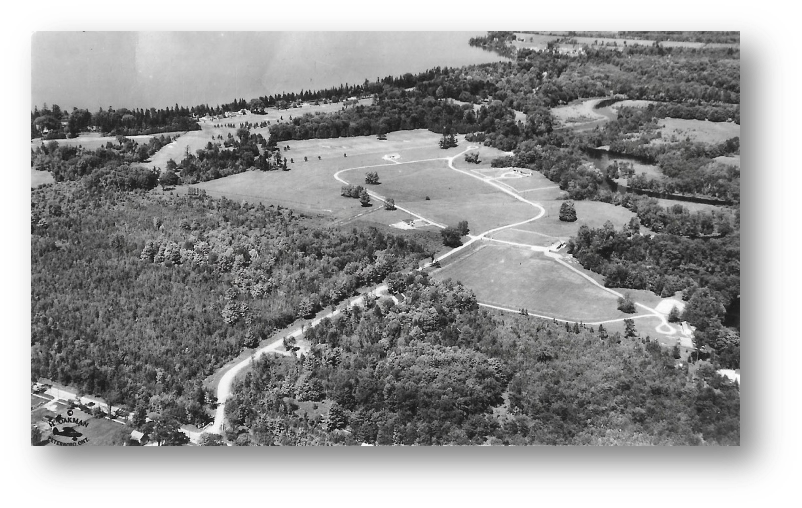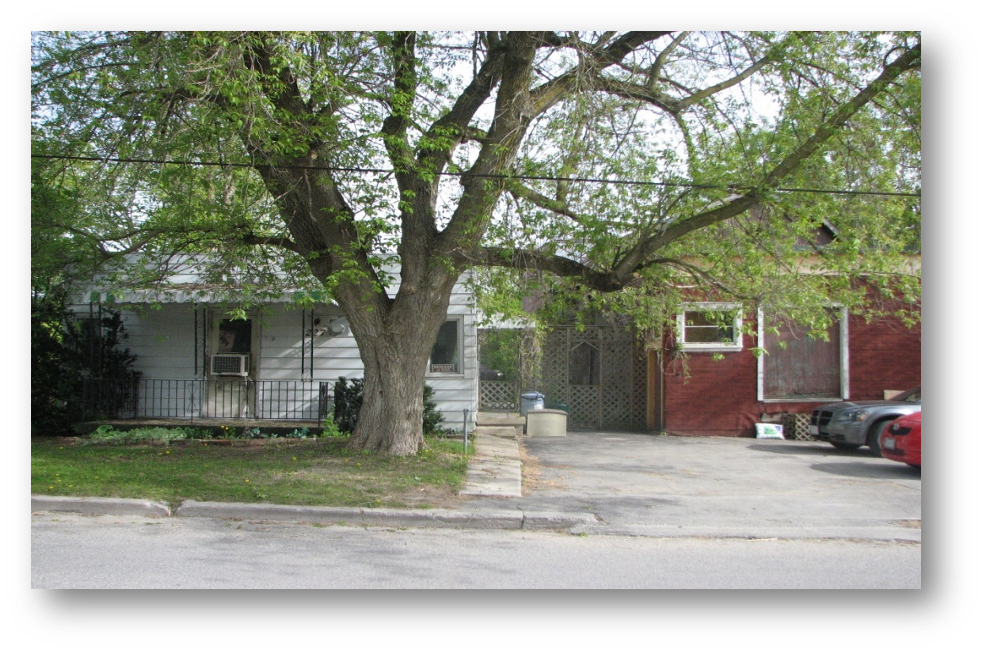Click to Download the PDF
Download the Word Doc
President’s Message
Happy New Year and Welcome to the January 2019 edition of the Georgina Historical Society Newsletter. On December 5th, the Georgina Historical Society was invited to participate with members from the Queensville Players and staff from the Georgina Library in an evening of Christmas stories, “Tales and Tidbits of Georgina” at the Keswick library. There was a great turnout to hear Christmas stories from Stephen Leacock, Peter Gzowski, as well as music, tales and reminisces of Georgina, and old favourites such as “Yes Virginia, There is a Santa Claus.” In addition to stories and music, there were also Christmas cookies and hot cider to be enjoyed. On Tuesday January 15th, at the Police Station, our first General meeting of 2019 will be held. It will be a “Bring and Brag” so be sure bring an item from the past to share with your fellow members.
See you there!
~ Tom Glover
THE WOOD COOK STOVE – A reminiscence by Tom Glover
When I visit the various buildings in the Georgina Pioneer Village, different items seem to reach out to me and bring back memories. In the Mann house, the old wood cook stove sitting in the kitchen is one such item. In fact, I would like to nominate the wood cook stove as the most versatile appliance ever to grace the farm kitchen. Used not just for cooking and as a source of heat, the wood stove had many other uses besides that. In our home, the wood stove served not only as the primary source of heat for cooking and warmth, but also as a water heater, clothes dryer, toaster, food warmer, dehydrator, humidifier, alarm clock, foot warmer, incubator, and much more.
When you came through our kitchen door, you were welcomed by the crackling of the wood fire and the smell of a roast or baking coming from the oven. A tea kettle would be simmering on the back of the stove ready to be slid over to the burner to produce a quick cup of tea. At meal time, the stove top would become a flurry of activity, three or four pots of potatoes and vegetables, meat in the frying pan or maybe a roast in the oven, and some bread or a pie in the warming oven above the stove. At breakfast time a lid would be removed from the stove top and replaced with a grill. We would then make toast and enjoy it topped with homemade jam or maybe Bee Hive Corn Syrup. Popcorn made on the stove top was another treat enjoyed by all during the long winter evenings.
At the one end of the stove was a water reservoir. Warm water was always available for household cleaning and hand washing. Below the warming oven, peeled apples were hung on a string. Once dried, they could be carefully stored, and would last for months. On the wall behind the stove were a row of coat hooks. Work clothes and coats were hung there so they would be warm and dry when the men needed them for work. There was enough space for a clothes rack to be placed around the sides and back of the stove too. Laundry would often be brought in wet or frozen from the clothesline and hung around the stove to dry.

My father would rise early in the morning and start the fire in the old stove. The last thing he did before going out to do his morning farm chores was open the damper all the way to encourage a roaring fire. This is when the wood stove became an alarm clock in our house. Hearing the roar of the fire, mother would have to race to the kitchen to turn the damper down and prevent a stove pipe fire. I think it might have been my father’s way of ensuring there would always be breakfast ready for him when he returned from the barn.
The oven quite often served as an incubator in our farm home. Baby chicks, piglets, lambs, and even a calf, were all saved at one time or another by the warmth from the cook stove’s oven. In our family, the cook stove’s oven served as an incubator not only to animals. My dad’s cousin Olive was born in 1892. She was a tiny premature baby and her twin sister died at birth. The doctor did not hold out much hope for the tiny infant, and the parents were told to keep the baby warm and hope for the best. They placed her in a six quart basket, and placed her on the oven door. The wood stove incubator did its job, and Olive not only survived but lived a full and long life of eighty-eight years.
Perhaps what I remember most about the wood cook stove is my father in his rocking chair by the fire reading the newspaper or my grandmother sitting there doing her knitting. The wood stove is a symbol of hearth and home and all that belongs there. These are but a few of the old wood cook stove’s many uses; I am sure you too have a lot of memories.
Where in Georgina?
Dale Taylor correctly identified the location of last month’s ‘Where in Georgina’ as the intersection of Church Street and the Queensway. This month’s ‘Where in Georgina’ is the top picture on the next page.

Our Barn – By Sandra Dickinson
Travelling West on Church Street in Keswick, a lot of people will remember the two buildings on the South side pictured on the next page. The very little white house seems to sit right on the road, while the hulking red barn looks like it’s going to collapse at any moment! Surely no one lives there! Up until 2008, that was actually the case. My husband, our two Dalmatians, and I lived in the 550 square foot white house along with the millions of ants that lived in the walls. We enjoyed using the barn for storage and the occasional party!
Many people thought these buildings had something to do with the Electric Railway that ran along Metro Road, but that is not the case. The railway had a station that sat on the South-East corner of Metro and Church, and between that station and the red barn was a huge building that turned out to be a coal-fired power plant that created electricity for the railway by burning the coal. It makes sense, as our entire yard is filled with burned pieces of coal (slag), and we can’t grow anything but weeds as the soil is very poor!
The barn came from a farm in Island Grove owned by the Gilroy family and was moved to its current location in 1919, then turned in to a cleaning and chopping mill. In the 1920s, the mill was run by the King Brothers (also, possibly the Wades and Riglers had something to do with it). In the 1930s, Fred Peel took ownership. At that point it was called the Keswick Chopping Mill, but once Fred took over, it became known as Peel’s Mill. By 1951, Fred had been the Town Clerk for North Gwillimbury Township for 17 years and the Assessor for 8 years, all while still operating the mill. Fred was some worker! It is believed that the small white house was built as a mill office then became the Town Office for Fred’s ever-expanding businesses. Fred was asked by Council to move the Clerk/Assessor position to a new office which they would rent for $300 per year. Fred argued that he could not continue to run the mill if he was not on site. Council decided to thank Fred for his years of service and then went on to appoint Erwin Winch as the new Town Clerk working out of the new office.

In 1954, Fred sold the mill to Alto Davison (formerly of Queensville) who enlarged the white house to make living quarters for his family. All milling operations seem to have ended in the late 1950s. In the 1960s, Alto Davison was listed as a merchant, so he may have continued to sell feed and seed to farmers. After that, the mill was used as a candle shop with the white house being used as a tea room right in to the 1970’s. Velma Davison continued to live on the property until it was sold (to us!) in 1994.
We decided to build a new (and larger) Viceroy home further back on the property in 2008, so the white house was demolished. The barn was used (very successfully) as a “Haunted House” in the late 1990s, but alas, all the kids we knew grew up and we grew too old to sit out there for hours in the cold. It is a wonderful place for storage and a workroom.
The Heritage Committee has flagged the barn “Historically Important”, and hopefully, it remains on Church Street for many more years. During the Doors Open Georgina in 2013, my husband and I heard many wonderful memories told by our visitors. We were also married in the barn, which made that day even more special! By the way, though it does look like it is going to collapse at any moment, it is really very sound with a basement and an attic, but no one lives there! We and our friends and family just enjoy it!
GHS News
Your board has decided to create several on-going sub-committees to focus on the management of tasks and specific events. Currently up and running is the Newsletter, Website, and the Archives Committees. Other proposed Committees are: a committee to manage our events such as Harvestfest and Old-fashioned Christmas; a fundraising and membership committee; and a general meetings committee. The membership will be invited to actively volunteer and participate with the committee(s) wherever their interests and talents lie. A further newsletter will flesh out more details about the committees. We hope most of these committees will be up and running before the spring. In the meantime, if any of them interest you, and you would like to be involved, contact one of the Board members in the Contact list at the end of this newsletter.
Melissa Matt has advised us that she found the old sign for the Roches Point Post Office on Kijiji. It is available, and is presently being acquired for the Georgina Pioneer Village by the Town of Georgina. Well done Melissa!
Also from Melissa, she’s shared with us two useful websites for historical and genealogical research: –
The site below is useful for the abstracts of property, under “Historical Books”. There appears to be a paywall for accessing the actual instruments, here referred to as “documents”.
This next site is for the Canadian Research Knowledge Network, which can now be accessed free of charge.
Events
February 4th:Board Meeting – 1:30 Noble House
February 12th: General Meeting
Looking ahead: – Rise to Rebellion – May 9th; Harvestfest – September 14th; Old-fashioned Christmas – November 28th
